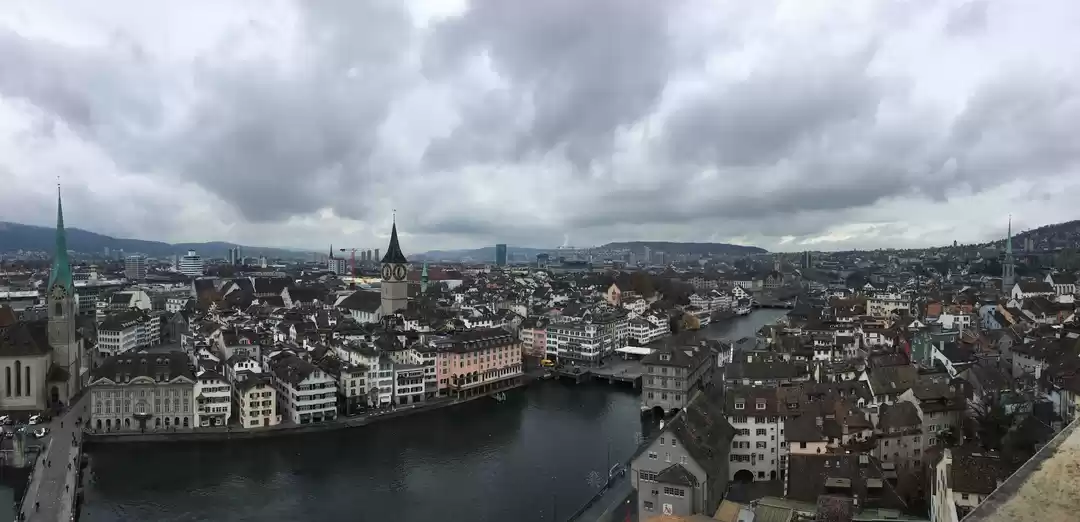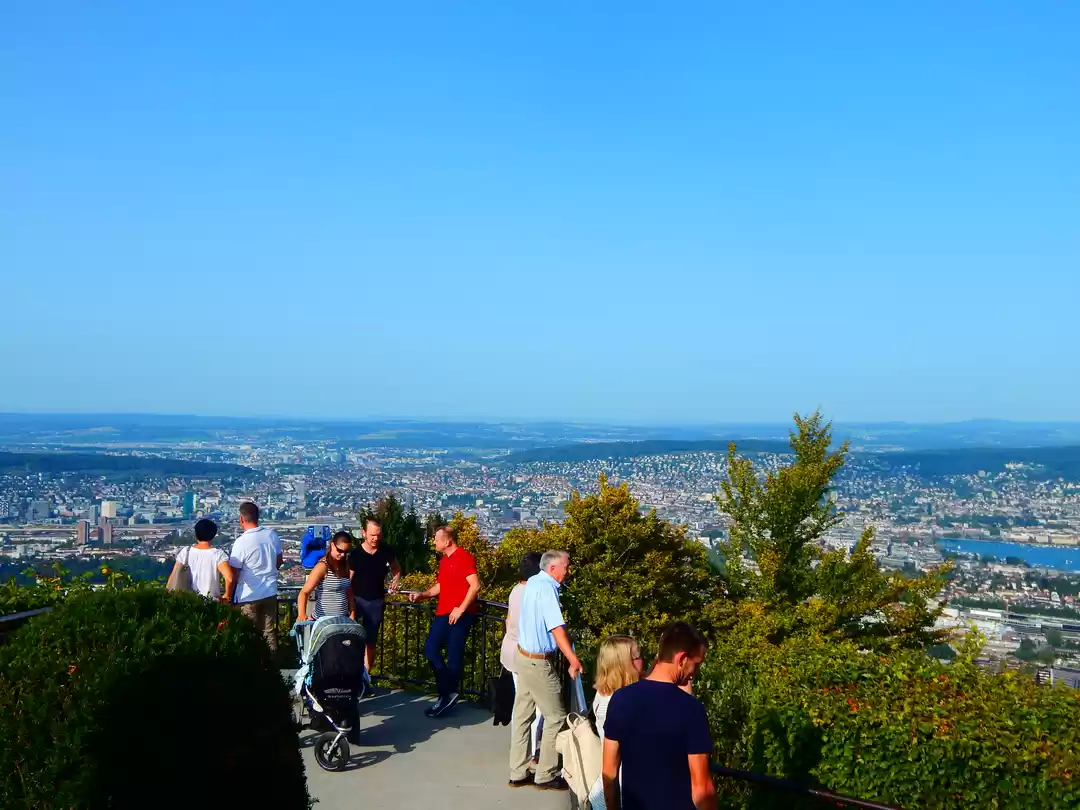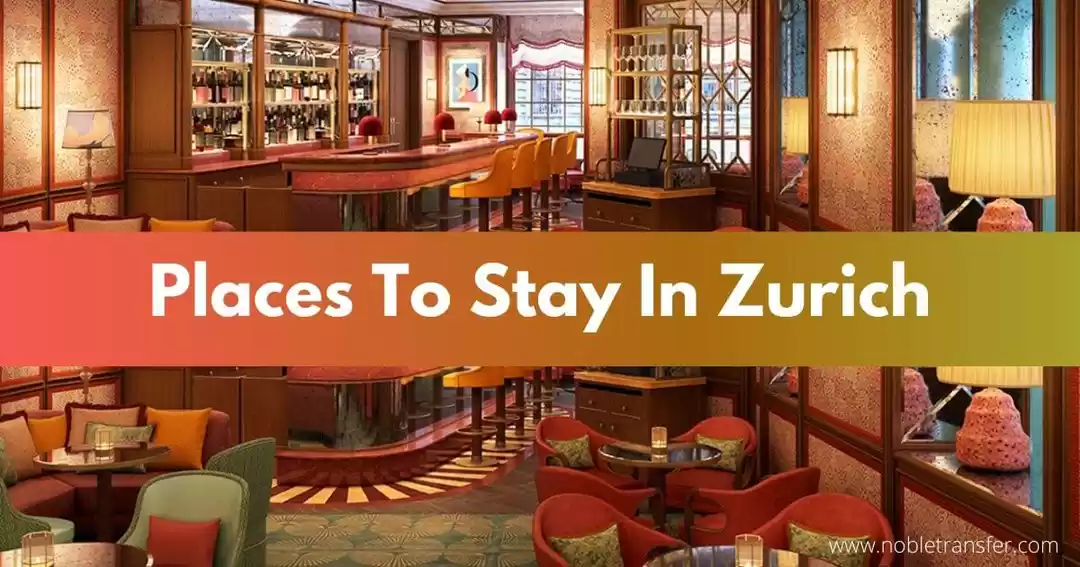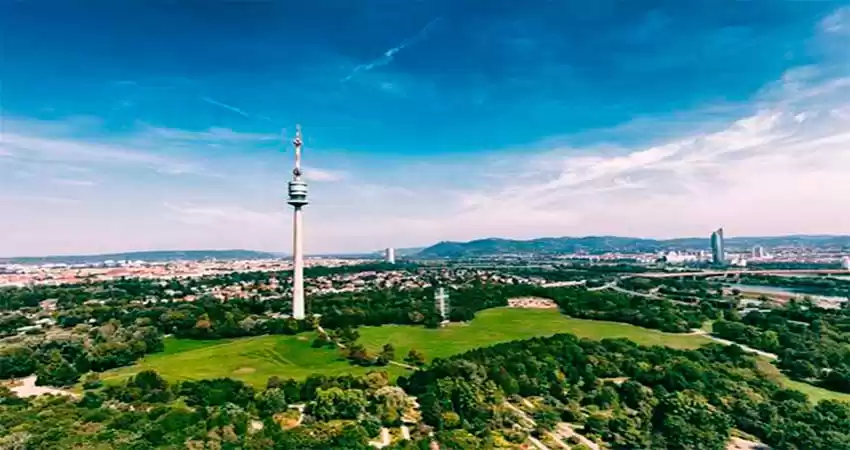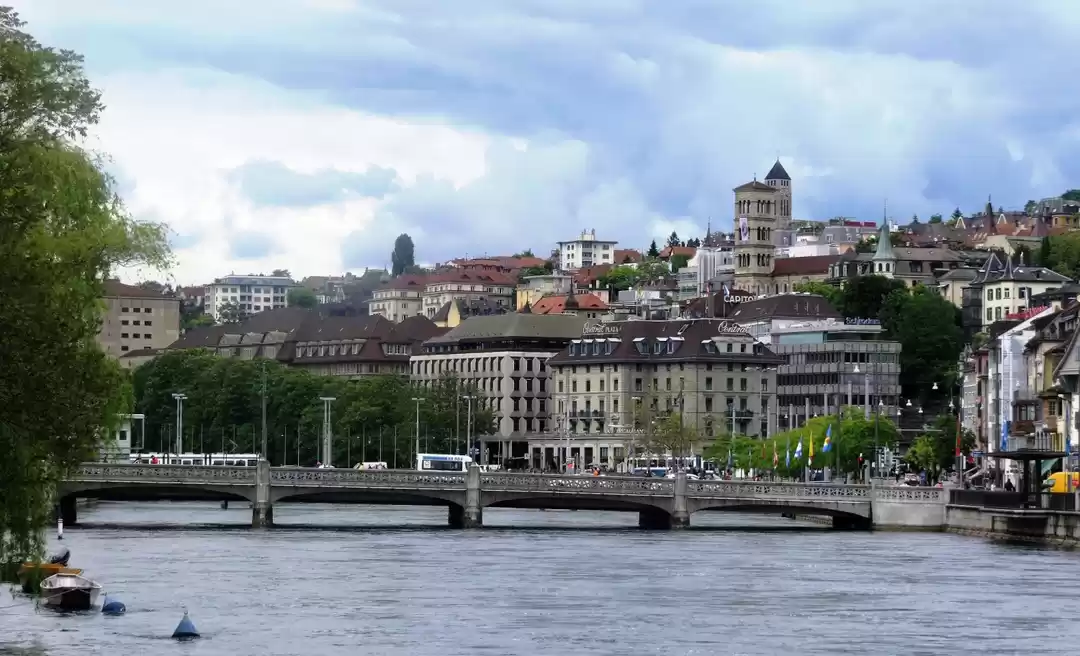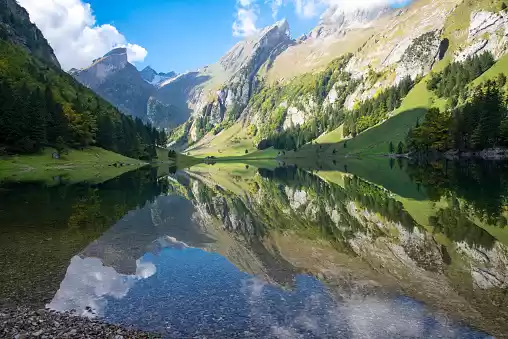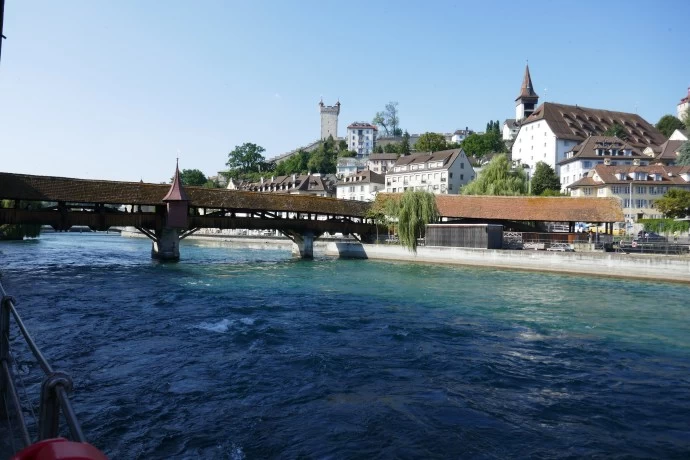If you are looking for a place to witness the history, art, and culture of Zurich, look no further than the Grossmünster Church. This majestic church is not only a stunning sight on the Zurich skyline, but also a symbol of the Swiss-German Reformation that shaped the identity of the city and the country. In this article, you will learn everything you need to know about the Grossmünster Church, from its legend and history to its art and architecture, and from its attractions and activities to its practical information. Whether you are a history buff, an art lover, or a spiritual seeker, you will find something to inspire and delight you at the Grossmünster Church.
The Legend and History of the Grossmünster Church
The Grossmünster Church has a fascinating legend behind its origin. According to the legend, Charlemagne, the first Holy Roman Emperor, was riding his horse near the Limmat River when he saw a bright light shining from the water. He followed the light and discovered the graves of the patron saints of Zurich, Felix and Regula, who were beheaded by the Romans for their Christian faith. Charlemagne decided to build a church on the spot to honor the martyrs, and thus the Grossmünster Church was born.
The legend may not be historically accurate, but it is true that the Grossmünster Church is one of the oldest churches in Zurich, dating back to the 9th or 10th century. The church underwent several construction, renovation, and expansion phases over the centuries, reflecting the changing styles and tastes of the times. The church started as a Romanesque basilica, with a nave, two aisles, and a transept. In the 13th and 14th centuries, the church added two Gothic towers, known as the Karlsturm and the Huldrychturm, which became the landmarks of the city. In the 15th and 16th centuries, the church underwent a Baroque makeover, with a new choir, a new roof, and new decorations.
However, the most significant transformation of the church happened in the 16th century, when the Grossmünster Church became the epicenter of the Swiss-German Reformation, led by Huldrych Zwingli and Heinrich Bullinger. Zwingli was the priest of the Grossmünster Church from 1519 to 1531, and he preached against the corruption and abuses of the Catholic Church, advocating for a more simple and pure form of Christianity based on the Bible. He also initiated a series of reforms in the church, such as abolishing the mass, removing the images and relics, and introducing the vernacular language in the services. Zwingli’s influence spread beyond the church, and he became a political and social leader in Zurich, promoting democracy, education, and social welfare.
He also formed alliances with other reformers in Switzerland and Europe, such as Martin Luther and John Calvin. Zwingli died in 1531 in a battle against the Catholic cantons, but his legacy was continued by his successor, Bullinger, who was the pastor of the Grossmünster Church from 1531 to 1575. Bullinger consolidated and codified the doctrines and practices of the Reformed Church, and wrote the Second Helvetic Confession, which became the official creed of the Reformed Church in Switzerland and other countries.
The Grossmünster Church was not only a place of worship, but also a place of learning and culture. The church housed a school, a library, a printing press, and a music academy, and attracted many scholars, writers, and artists to Zurich. The Grossmünster Church was also a place of resistance and courage, as it stood up against the tyranny and oppression of the foreign powers, such as the Habsburgs, the French, and the Nazis, and defended the freedom and sovereignty of the Swiss people.
The Art and Architecture of the Grossmünster Church
The Grossmünster Church is a treasure trove of artistic and architectural wonders, blending the old and the new, the sacred and the secular, and the dark and the light. As you enter the church, you will be greeted by the bronze doors by Otto Münch, which depict the scenes from the legend of Charlemagne and the history of the Reformation. The doors are a modern addition, installed in 1935, but they echo the style and spirit of the Romanesque period.
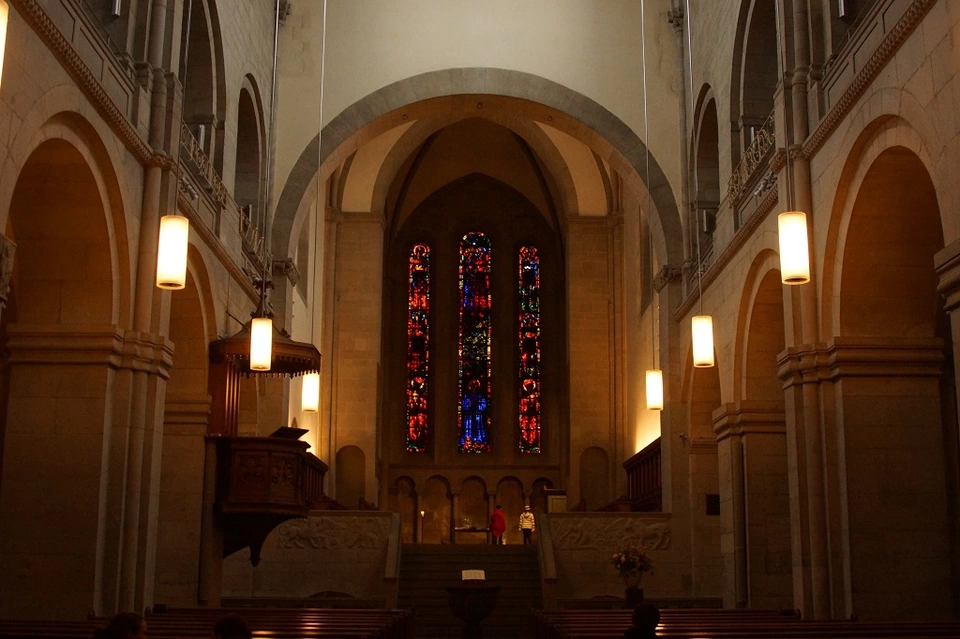
As you walk inside the church, you will be amazed by the stained glass windows by Augusto Giacometti and Sigmar Polke. Giacometti was a Swiss painter and sculptor, who created the windows for the choir and the north and south aisles in 1932. His windows are colorful and abstract, using geometric shapes and symbols to convey the themes of creation, redemption, and sanctification. Polke was a German painter and photographer, who created the windows for the nave and the transept in 2009. His windows are made of agate slices, which create a dazzling effect of light and color, resembling the cosmos or the stained glass of a medieval cathedral.
Another highlight of the church is the organ by Metzler Orgelbau, which is one of the largest and finest organs in Switzerland. The organ has four manuals, 68 stops, and 5,883 pipes, and produces a rich and powerful sound that fills the church. The organ was built in 1960, and restored in 2011. The organ is used for regular services, concerts, and recitals, and attracts many organists and music lovers from around the world.
The oldest and most mysterious part of the church is the crypt, which dates back to the 11th century. The crypt is the largest surviving Romanesque crypt in Switzerland, and it contains the tombs of Charlemagne, Felix and Regula, and other important figures of the church. The crypt also features some faded murals and frescoes, which depict the life and miracles of the saints, as well as some scenes from the Old and New Testaments. The crypt is a place of silence and contemplation, where you can feel the presence of the past and the mystery of the faith.
The Attractions and Activities of the Grossmünster Church
The Grossmünster Church is not only a place to admire, but also a place to explore and enjoy. There are many things to do and see at the church, that will make your visit memorable and rewarding.

One of the most popular attractions of the church is the Karlsturm, or the Charles Tower, which is the taller and older of the two towers. The tower is named after Charlemagne, who is said to have ordered its construction. The tower is open to the public, and you can climb the 187 steps to the top, where you will be rewarded with a breathtaking view of the city, the river, the lake, and the mountains. The tower also houses a small museum, which displays some historical artifacts and documents related to the church and the Reformation.
Another attraction of the church is the cloister Reformation Museum, which is located in the former monastery of the Grossmünster Church. The museum showcases the history and impact of the Reformation in Zurich, Switzerland, and beyond, through exhibits, models, paintings, and multimedia. The museum also features the original pulpit of Zwingli, where he delivered his fiery sermons, and the original printing press of Christoph Froschauer, where he printed the first German Bible and other Reformation literature.
If you are looking for a spiritual and musical experience, you can also attend a service or a concert at the Grossmünster Church. The church offers regular services on Sundays and weekdays, in German and English, with organ music and choir singing. The church also hosts various concerts throughout the year, featuring classical, sacred, and contemporary music, performed by local and international artists. The church has a splendid acoustics and a serene atmosphere, which make the music more enjoyable and uplifting.
Practical Information
Before you visit the Grossmünster Church, here are some practical information that you need to know:

- The price of admission to the church is free, but there is a fee of CHF 5 for climbing the Karlsturm, and a fee of CHF 8 for visiting the cloister Reformation Museum. You can also buy a combined ticket for CHF 10, which includes both the tower and the museum.
- The opening hours of the church are from 10:00 to 18:00 from Monday to Saturday, and from 12:30 to 17:30 on Sunday. The opening hours of the Karlsturm are from 10:00 to 17:00 from April to October, and from 10:00 to 16:30 from November to March. The opening hours of the cloister Reformation Museum are from 10:00 to 17:00 from Tuesday to Sunday, and closed on Monday.
- The address of the church is Grossmünsterplatz, 8001 Zurich, Switzerland. The website of the church is www.grossmuenster.ch, and the phone number of the church is +41 44 252 59 49.
- The church is easily accessible by public transport, as it is located in the heart of the old town of Zurich. You can take the tram 4 or 15 to the stop Helmhaus, or the tram 3 or 5 to the stop Rathaus, and walk a few minutes to the church. You can also take the train to the Zurich Hauptbahnhof, and walk about 15 minutes to the church, or take the tram 4 or 15 from there. Alternatively, you can take a boat to the stop Bürkliplatz, and walk along the Limmat River to the church.
- The church is surrounded by many other attractions and landmarks in Zurich, such as the Fraumünster Church, the St. Peter’s Church, the Rathaus, the Lindenhof, the Niederdorf, and the Bahnhofstrasse. You can easily explore the old town of Zurich on foot, or join a guided tour or a walking tour that covers the main sights and stories of the city. You can also enjoy the views and the atmosphere of the river and the lake, or visit one of the many museums, galleries, or parks in the city.
- The church is also close to many restaurants, cafes, bars, and shops, where you can find a variety of cuisines, drinks, and souvenirs. You can try some of the local specialties, such as the Zürcher Geschnetzeltes, the Zürcher Leckerli, or the Zürcher Schoggi. You can also sample some of the Swiss chocolates, cheeses, or wines, or buy some of the Swiss watches, knives, or cuckoo clocks.
The church is a great place to stay if you want to experience the charm and the culture of Zurich. You can find many hotels, hostels, and apartments near the church, ranging from budget to luxury, and catering to different types of travelers, such as families, solo travelers, couples, and groups. You can also find some of the best views, amenities, and services in the city, and enjoy the convenience and the comfort of being close to the church and other attractions.
The Grossmünster Church is a must-see attraction in Zurich, as it offers a unique and unforgettable experience of the history, art, and culture of the city and the country. The church is not only a stunning sight, but also a symbol of the Swiss-German Reformation that shaped the identity of the city and the country. The church is also a treasure trove of artistic and architectural wonders, blending the old and the new, the sacred and the secular, and the dark and the light. The church is also a place to explore and enjoy, as it offers many things to do and see, such as climbing the Karlsturm, visiting the cloister Reformation Museum, attending a service or a concert, or simply admiring the beauty and the atmosphere of the church.
The church is also a place to stay and discover, as it is surrounded by many other attractions and landmarks in Zurich, as well as many restaurants, cafes, bars, and shops, where you can find a variety of cuisines, drinks, and souvenirs. Whether you are a history buff, an art lover, or a spiritual seeker, you will find something to inspire and delight you at the Grossmünster Church.

